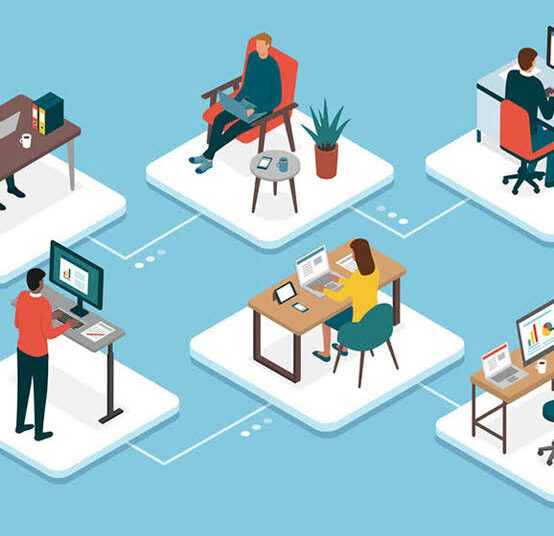Remote work is all well and great, but there might be a more sinister truth hiding under the surface of flexible hours, work-life balance, and higher productivity. Even if there are companies that see the benefits of WFH culture, there are still many companies that are hoping to revert back to the conventional 9-to-5 system, with their workforce working in a physical office that they are able to visit and people they are able to meet, mentor, and manage.
These companies often argue that face-to-face interactions foster a unique synergy, helping to cultivate a company’s culture and brand identity. They believe that the nuances of non-verbal communication, spontaneous ideation, and the camaraderie built in shared physical spaces can’t be fully replicated virtually. For them, the traditional office structure isn’t just about oversight; it’s about preserving the essence of their organization and ensuring the integrity of team dynamics.
Differences in priorities
An employer wants results, and employees, well, they just want to earn enough money to sustain their financial habits. That’s why the rat race was created. But when the Covid-19 pandemic threw a wrench into the well-oiled rig that provided the tracks for the rat race, a new practice was born: remote work. It has shown the general public a life where they don’t have to put up with their employers breathing down their necks or being tied down by a strict working schedule. It opened their eyes to a happier life, one where they are able to escape from the ball and chain of a ticking clock. But employers see working from home a pandemic as bad as the one that kickstarted the culture – people working from home cannot possibly be more productive, it is hard to hold them accountable, and they aren’t able to get to know them or learn how their mind ticks. Enter employees monitoring software, a topic so hotly debated that people are still largely divided over how acceptable it is.
This software not only tracks productivity but also monitors an employee’s every move, often blurring the line between professional oversight and personal privacy invasion. For many, it feels like an attempt to bring the watchful eye of the office into the sanctuary of their homes. While businesses argue it’s a tool to ensure accountability, many workers see it as an overreach, creating a potential rift between employer and employee trust. As remote work continues to evolve, finding the right balance between ensuring productivity and respecting privacy will be crucial for maintaining harmony in the virtual workspace.
Is it considered spying when you’re on the clock?
Imagine working in retail and knowing that there are CCTVs around the shop. Is that not an invasion of privacy? Most people would tell you that it isn’t, because it’s part of the store’s security measure, but the fact is that employers do use these CCTVs to monitor their staff as well. So how different is it from remote work tracking software? If you’re on the clock, it should be expected that you’d be monitored – employers are, in essence, paying for their employee’s talents and time. When you’re on the clock, your time belongs to your employer, so it shouldn’t even be an issue. Furthermore, many tracking software doesn’t operate solely as a productivity tracking tool, it also provides valuable insights into employee working patterns and may be able to provide suggestions on how to improve productivity, all of which are beneficial to companies that employ them.
However, the key difference lies in the environment. A retail store is a public space, and employees are aware of their observable nature when they join. Conversely, a home is a private sanctuary. While employees should undoubtedly be accountable during work hours, there’s a delicate balance to strike. The line between ensuring work is being done and infringing on someone’s personal space can be thin. It’s essential that employers remain transparent about what is being monitored and ensure the data is strictly used for professional purposes. Open dialogue and clear boundaries can help navigate this complex issue, ensuring both productivity and personal privacy are respected.
Healthy communication is the basis for all relationships
Professional or personal, healthy communication is the foundation or the glue that keeps it all together. Companies are just as different as individuals – they have different visions, objectives, environments. The key factor is to find an employer (or employee) that you are comfortable with, one that you are able to trust. From there, building a beneficial relationship would be easy. The key is to be open and transparent about one’s expectations and make it clear from the start in order to have a long and successful career.
Understanding and respecting boundaries also play a significant role in fostering trust. It’s essential to remember that both parties have needs and concerns. Regular check-ins and feedback sessions can help address any potential issues before they escalate. By creating an environment where open dialogue is encouraged, potential conflicts can be minimized, leading to a more harmonious and productive working relationship.











